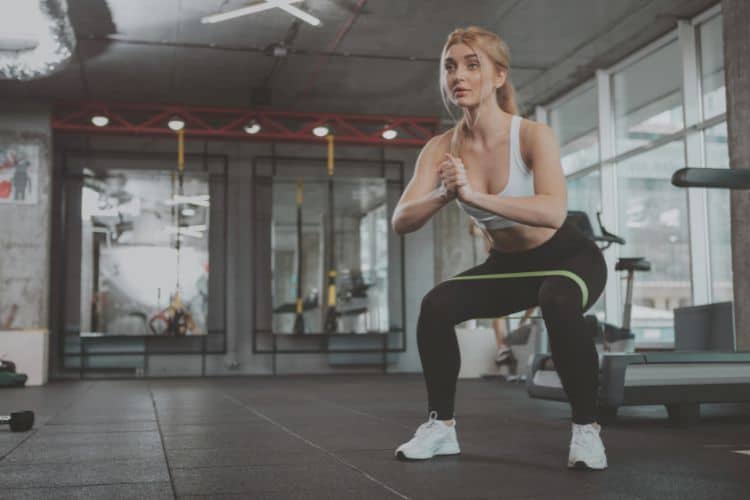Sign up for workout ideas, training advice, reviews of the latest gear and more.






A strong back is the foundation of good posture, improved athletic performance, and injury prevention. Yet, many people neglect back training or assume it requires hours in the gym. The truth? With the right strategy, a 30-minute back workout can deliver incredible results. Whether you’re training at home or in the gym, this guide breaks down effective exercises, benefits, and sample routines—all optimized for busy lifestyles.
One of the biggest benefits of back training is improved posture. Strengthening your lats, rhomboids, and lower traps counteracts forward shoulder hunching, especially common in people who sit for long periods. Regular back exercises help support the spine, reduce slouching, and relieve back pain.
Back training balances chest and shoulder workouts, helping you avoid muscular imbalances. A well-developed back also contributes to the coveted V-taper physique—broad shoulders narrowing into a trim waist.
Many daily movements—lifting, reaching, twisting—involve back muscles. Strengthening the back improves performance in other exercises like squats, deadlifts, and push presses. Whether you’re lifting groceries or doing Olympic lifts, your back plays a crucial role.
A well-rounded 30-minute back workout should include these core elements:
Compound exercises like rows, deadlifts, and pull-ups work multiple muscle groups simultaneously. These exercises form the backbone (pun intended) of a time-efficient workout.
Isolation moves target specific muscles such as the rear deltoids or spinal erectors. They add definition and help fix weak links in your back chain.
Pairing two exercises back-to-back (supersets) or rotating through a group of exercises (circuits) boosts intensity and keeps your workout under 30 minutes.
It’s not just about moving weight—it’s about controlling the movement. Focusing on squeezing your back muscles during each rep increases activation and muscle growth.
Targets: Lats, traps, rhomboids
How to: Hang from a pull-up bar with an overhand grip, pull your chin above the bar, and lower under control.
Modification: Use a resistance band or assisted pull-up machine.
Targets: Lats, rhomboids, rear delts
How to: Hinge at the hips, hold the barbell with an overhand grip, and row it toward your waist. Keep your back flat and core braced.
Targets: Middle back, lats
How to: Place one knee and hand on a bench. Pull the dumbbell toward your hip, squeezing your back muscles.
Targets: Lats
How to: Sit at a cable machine, grab the bar with a wide grip, and pull it to your upper chest. Avoid leaning too far back.
Targets: Middle and upper back
How to: Sit at a cable row machine, grip the handle, and pull it toward your abdomen while squeezing your shoulder blades together.
Targets: Rear delts, traps
How to: Use a rope attachment at face height. Pull the rope toward your forehead while flaring elbows.
Targets: Erector spinae (lower back)
How to: Use a Roman chair or perform on the floor. Extend your upper body against resistance and squeeze your glutes.
Warm-Up (3 minutes):
Workout (25 minutes):
Cool-Down (2 minutes):
No gym? No problem. You can still train your back using bodyweight or household items.
Warm-Up (3 minutes):
Workout (25 minutes):
Cool-Down (2 minutes):
If your goal is muscle growth or improved posture, train your back 1–2 times per week. Leave at least 48 hours between sessions for recovery.
Gradually increase resistance, reps, or sets over time. This challenges your muscles and stimulates growth.
Many lifters overtrain lats but forget their rear delts and spinal erectors. Balanced back training prevents posture issues and improves strength.
Form trumps weight. Always prioritize control and alignment to prevent injury and ensure maximum muscle activation.
Short workouts increase consistency. You’re more likely to stick to a 30-minute workout, making long-term results more attainable.
Strengthening your posterior chain reduces lower back pain and improves alignment—especially important for desk workers.
Your back is crucial in pulling, lifting, and stabilizing movements. A stronger back boosts your performance in all compound lifts.
Jerking the weight or using body swing reduces effectiveness and increases injury risk. Slow, controlled movement is key.
Focus on squeezing your back at the top of each rep. This improves muscle recruitment and hypertrophy.
Back exercises often involve the biceps. If you’re feeling it more in your arms than your back, your form likely needs adjusting.
To maximize muscle growth and avoid burnout:
A 30-minute back workout can be just as effective—if not more—than a longer session when you focus on intensity, smart programming, and proper technique. Whether you’re training at the gym or at home, consistency is key. The exercises listed here are designed to hit every part of your back, promoting strength, posture, and balance.
No more excuses. In just 30 minutes, you can build a strong, sculpted back that supports your fitness goals and daily life.
It’s not recommended to train the same muscle group daily. Aim for 1–2 back workouts per week, with at least 48 hours of rest between sessions.
Absolutely. With proper intensity, compound movements, and progressive overload, 30-minute workouts can lead to significant muscle gains.
You can include exercises like back extensions and good mornings to target the lower back, or integrate them into your back routine.
Want more effective workouts?
Subscribe to our blog or follow us on Pinterest for new routines, challenges, and fitness tips!
Stay up to date on the latest women’s health, fitness and lifestyle trends and tips.